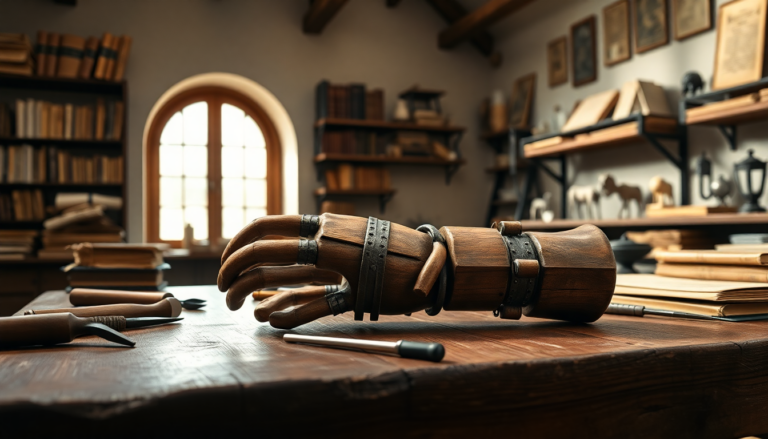Argomenti trattati
The world of prosthetics has undergone a remarkable transformation, especially with the advent of 3D printing technology. Recently, a fascinating project by researchers at Auburn University has unearthed a historical gem: the 16th-century Kassel Hand. This initiative not only highlights a piece of the past but also offers a unique glimpse into the lives of amputees during the Renaissance. By carefully replicating this ancient prosthetic, the team aims to deepen our understanding of its functionality and significance.
The Historical Context of the Kassel Hand
Imagine a time when medical technology was still in its infancy; the Kassel Hand, believed to have come from Germany in the 1500s, stands as one of the few surviving mechanical prosthetics from that era. Its design is a testament to the creativity and skills of Renaissance artisans, showcasing the practical needs of individuals who faced the daunting challenges of amputation. By using this original artifact as a reference, researchers can delve into the intricate mechanisms that made the hand functional, shedding light on the technological advancements of the time.
But understanding the Kassel Hand isn’t just about its mechanics. It invites us to consider the broader social and cultural landscape of the Renaissance. Prosthetics back then were not just utilitarian tools; they often symbolized status and resilience. The ability to craft and use such devices speaks volumes about the human spirit’s remarkable capacity to adapt and innovate in the face of adversity. Have you ever thought about the stories that these artifacts could tell?
The 3D Printing Process and Its Implications
The research team utilized cutting-edge 3D printing technology to create a highly accurate replica of the Kassel Hand. Using PLA filament, they achieved an impressive level of precision, successfully capturing the original design’s complexities. During testing, the 3D-printed hand demonstrated a remarkable ability to hold objects, with a weight capacity of up to 20 pounds. This achievement is particularly noteworthy, especially considering that the materials used for the replica are vastly different from the iron of the original artifact.
During practical tests, the hand’s functionality shone through, effectively grasping and holding various items. However, the initial demonstrations did face some hiccups with the release lever mechanism, which turned out to be a bit fragile. The team responded by redesigning the lever, resulting in a more robust demonstration that still honors the historical essence of the piece. This adaptability beautifully illustrates the symbiotic relationship between historical study and modern technology, showcasing how innovation can breathe new life into ancient artifacts.
Engaging the Public with History
One of the primary aims of this research is to engage a broader audience with the history of prosthetics. By creating a tangible and interactive version of the Kassel Hand, the team hopes to foster a deeper understanding of the challenges faced by individuals with disabilities throughout history. This initiative not only preserves the legacy of the Kassel Hand but also serves as a reminder of the technological advancements that continue to shape the future of prosthetics.
As 3D printing revolutionizes the field, it paves the way for personalized prosthetic solutions that are not just functional but also accessible. The intersection of technology and history offers a unique platform for education and advocacy, promoting awareness of the importance of inclusivity in design and innovation. Isn’t it amazing to think about how far we’ve come, and where we might be headed next?

